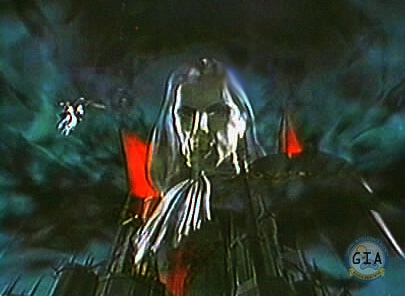

As such, it’s one of the few games in the series to not contain the famous Vampire Killer whip. Players take on the role of a woman named Shanoa, who is leading an organization that set out to defeat Dracula after the Belmont family vanished. The Nintendo DS has three Castlevaniatitles and they’re all pretty good, but Order of Ecclesia takes home the top prize. Read More: Castlevania Season 2 Easter Eggs and Refence Guide 5. Yes, the action-based combat felt a lot like God of War, and the game’s ending left a bit to be desired – but hey, look at me, I’m cracking a whip at a vampire in high definition. In the end, this is the Castlevania title that was most successful at transitioning to 3D. When Konami first announced the title, it was just Lords of Shadowbecause they wanted to keep the fact that they were completely rebooting the Castlevania franchise a secret. We’re tempted to just write that Hideo Kojima was a producer on this title and leave it at that, but really, the entire production team deserves kudos for making Castlevania: Lords of Shadow a great game. Castlevania: Lords of ShadowĢ010 | MercurySteam & Kojima Productions | PS3, X360

Trevor Belmont does become playable, however, along with his trusty whip once the main game has been beaten. It offers a fresh story and protagonist, leaving the Belmont family behind in favor of Hector, a Devil Forgemaster who was previously employed by Dracula. The game is set three years after the events of Castlevania III. The gorgeous levels and character designs would serve as inspiration for a manga spinoff that was published by Tokyopop. Castlevania: Curse of DarknessĬurse of Darknesswas not perfect by any means, but the art style alone earns it a spot on this list. Read More: Castlevania Season 1 Easter Eggs and Reference Guide 7. Castlevania IIIwas unique in that it allowed for different story paths and multiple endings based off which companion accompanied Trevor, a concept that felt new and exciting during this era of gaming. Players took on the role of Trevor Belmont and could select one of three additional characters to fight alongside him in the quest to once again defeat Dracula. (You want me to go around and gather Dracula’s body parts and bring him back to life… just so I can kill him again? Seriously?) As a result, Konami decided to go back to basics with Castlevania III, getting rid of most of the RPG and action-adventure elements from Simon’s Quest in favor of a return to the original game’s platforming. Castlevania III: Dracula’s CurseĬastlevania 2: Simon’s Quest received what you might call a less than warm reception from fans. Heroes John Morris and his best friend Eric Lecarde stand up to Bartley and prevent Dracula’s resurrection.

Bartley suddenly appears in the 20th century, intent on continuing her uncle’s dark legacy with the ultimate goal of bringing him back to life. It tells the story of a legendary vampire named Elizabeth Bartley, who is Dracula’s niece.

Castlevania: Bloodlinesīloodlineswas the only Castlevania title to see release on Sega’s 16-bit console. Read More: The Real History of Dracula 9. His main weapon, a whip called “Vampire Killer,” was perhaps a little too spot-on in its name but would soon become an iconic part of gaming history. Players guided vampire slayer Simon Belmont through six levels that got ridiculously difficult at times. The original title was a classic side-scroller, but its Gothic-themed romp through Dracula’s castle set it apart from other similar platformers of the era. CastlevaniaĬastlevania as a franchise would pick up a lot of new tricks in later years, but at heart, it’s always been about the horror. Here are our picks for the top 10 Castlevania games of all time: 10.


 0 kommentar(er)
0 kommentar(er)
